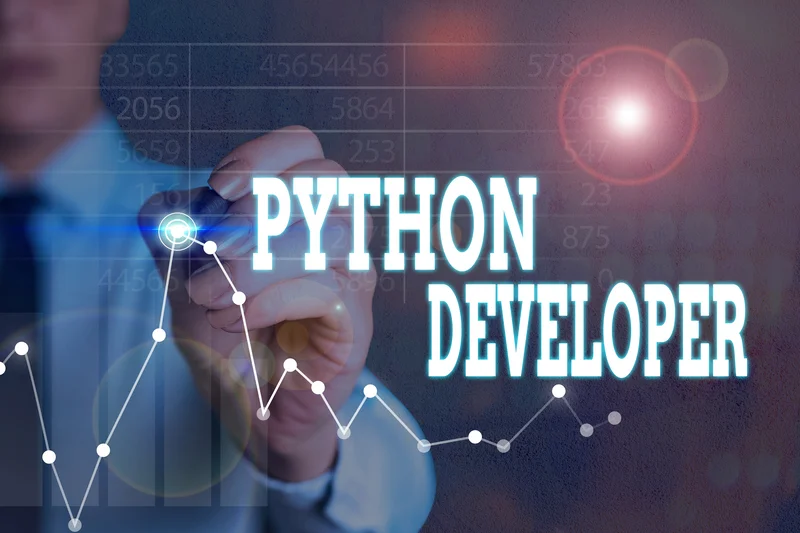A finite state machine (FSM) is a conceptual mannequin that describes techniques with a finite number of states and transitions to represent their behavior and logic. This is as a end result of an FSM’s reminiscence is restricted by the variety of states it has. A finite-state machine has the identical technology trends computational energy as a Turing machine that is restricted such that its head may solely perform “read” operations, and at all times has to move from left to proper.
What’s The Distinction Between Dfa And Nfa?
For now, these easy definitions are all we require to complete our mannequin. Although NFAs seem more versatile, they do not have more computational power than DFAs. Every NFA can be transformed to an equivalent DFA, though the ensuing DFA might have extra states. In an NFA, if any transition leads to what is a finite state machine an accepting state, the string is accepted.
Deterministic Finite Automata (dfa)

This is as a result of an FSM’s memory is proscribed by the variety of states it has. An FSM could also be one thing very summary, like a model for a business represented by an illustration, or it might be something concrete, like a merchandising machine or pc. The list of potential mixtures of those components is limited within a finite state machine. A fuzzy state machine allows the potential for factors of knowledge that aren’t within discrete, pre-designated categories. A finite state machine could additionally be implemented by way of software or hardware to simplify a fancy problem.
Are There Instruments To Help Design Finite State Machines?
This is beneficial in definitions of general state machines, but less useful when remodeling the machine. A further distinction is between deterministic (DFA) and non-deterministic (NFA, GNFA) automata. In a deterministic automaton, every state has precisely one transition for every possible enter. In a non-deterministic automaton, an enter can result in one, a couple of, or no transition for a given state. The powerset development algorithm can remodel any nondeterministic automaton into a (usually extra complex) deterministic automaton with equivalent functionality.

Deterministic Finite State Machine (dfsm)
Acceptors (also referred to as detectors or recognizers) produce binary output, indicating whether or not the acquired input is accepted. Once all input has been acquired, if the present state is an accepting state, the input is accepted; otherwise it’s rejected. As a rule, input is a sequence of symbols (characters); actions are not used. The begin state can also be an accepting state, during which case the acceptor accepts the empty string. The instance in figure 4 exhibits an acceptor that accepts the string “good”.
The turnstile state machine can be represented by a directed graph referred to as a state diagram (above). An input that doesn’t cause a change of state (such as a coin input within the Unlocked state) is represented by a round arrow returning to the unique state. The arrow into the Locked node from the black dot signifies it is the initial state. A deterministic finite automaton without settle for states and without a beginning state is named a transition system or semiautomaton. Finite state machines are extensively utilized in computer science and varied different fields to mannequin and describe the behavior of methods with distinct states and transitions between these states.
Regarding the sunshine swap instance, this permits us to store the brightness stage in a variable as an alternative of a variety of states. In that means, we can simplify the statechart by merging all Light On states into one and executing the output actions on a self-transition. Here we just increment the brightness worth each time the transition is taken. We use the modulo expression to make sure the brightness value stays between 1 and 3. This has the profit that we will change the number of brightness ranges with out including new states. Finite state machine (FSM) is a term utilized by programmers, mathematicians, engineers and other professionals to describe a mathematical mannequin for any system that has a limited variety of conditional states of being.
- Finite State Machines (FSM) are sometimes used while programming to be able to enable for extra complex series of actions.
- The example in determine 4 exhibits an acceptor that accepts the string “nice”.
- This fusion will enable FSMs to be taught and dynamically regulate their states, transitions, and actions based on real-time knowledge and complicated patterns, leading to more subtle and context-aware decision-making.
- In addition, artificial intelligence can be used to gather knowledge about techniques with pattern recognition and automatic models.
- Finite state machines provide a structured strategy to designing complex systems and assist perceive and implement their habits efficiently.
A transition is a set of actions to be executed when a situation is fulfilled or when an occasion is obtained. For instance, when using an audio system to listen to the radio (the system is in the “radio” state), receiving a “subsequent” stimulus results in moving to the next station. When the system is within the “CD” state, the “next” stimulus results in transferring to the subsequent monitor.

This concept is useful in circumstances the place a quantity of finite-state machines are required to work collectively, and when it’s convenient to think about a purely combinatorial part as a form of FSM to swimsuit the design instruments. A traffic gentle controller may be modeled utilizing an FSM with states corresponding to ‘Green,’ ‘Yellow,’ and ‘Red.’ Transitions happen based mostly on timed intervals or automobile presence. Input events can embody timers, vehicle detectors, and pedestrian buttons. Now, let’s say the robotic receives totally different instructions or occasions, corresponding to urgent a button or detecting an impediment. These instructions or occasions can cause the robotic to alter its state and carry out totally different actions.
This implies that for each mixture of an input state Q and an input image ∑, there’s one distinctive next state Q. The above instance shows that each output worth is outlined for a mix of input state and input worth. This means that for each mixture of a present state Q and an enter symbol ∑, there might be one unique subsequent state Q. In the above example, we can represent each of our states within our beforehand defined DFA as an object that inherits from the bottom State sealed class. All of this is probably most comprehensible by way of the DFA being visually represented in our, now up to date, state diagram for the light-switch. Firstly, we outline the initial state q0 to be inside the set of states the automata represents.
In addition, synthetic intelligence can be used to collect data about methods with sample recognition and automated fashions. A finite state machine (sometimes referred to as a finite state automaton) is a computation mannequin that could be implemented with hardware or software and can be used to simulate sequential logic and a few laptop applications. Finite state machines can be used to model issues in lots of fields together with mathematics, artificial intelligence, video games, and linguistics. Finite-state machines are a class of automata studied in automata theory and the concept of computation. In abstract, a Finite State Machine is a mathematical mannequin used to describe the behavior of a system in response to a sequence of inputs or occasions.
In a deterministic FSM, each state transition is uniquely decided by the present state and input. This implies that given a selected input and present state, only one attainable transition to the next state exists. At any given second, the robot can be in certainly one of a restricted variety of states, such as ‘Idle,’ ‘Moving,’ or ‘Cleaning.’ These states characterize the robot’s present situation or what it is doing. One might think that NDFAs can solve problems that DFAs can’t, but DFAs are just as powerful as NDFAs.
They are used to outline grammatical rules, syntactic constructions, and semantic patterns, enabling the recognition and evaluation of assorted linguistic components throughout the textual content. By following this step-by-step process, the FSM effectively controls the system’s conduct based mostly on its present state and the input events it receives. The FSM’s transitions and actions allow the system to reply appropriately to totally different situations and stimuli. Represent the states, input occasions, and transitions in a tabular type or diagram. A state transition desk typically consists of rows for the present state, columns for enter events, and cells indicating the subsequent state or motion. An acceptor may be described as defining a language that may comprise each string accepted by the acceptor but none of the rejected ones; that language is accepted by the acceptor.
However, a DFA would require many more states and transitions than an NDFA would take to solve the same problem. State \(a\) is the start state, and from there, we can create a string with nonetheless many 1’s and 0’s in any order, after which switch to state \(b\) or state \(e\), or we will instantly transfer to state \(b\) or state \(e\). In any case, the NDFA will solely settle for a string that reaches state \(d\) or state \(g\). In order to succeed in state \(d\) or state \(g\), the string should end with a “01” (for state \(d\)) or a “10” (for state \(g\)). An NDFA accepts a string \(x\) if there exists a path that’s compatible with that string that ends in an accept state. Through state encoding for low energy state machines may be optimized to attenuate energy consumption.
In accordance with the overall classification, the next formal definitions are found. Check out the discussions over on GitHub where yow will discover extra individuals discussing statecharts. Notice how resetting the dump servo and retracting the raise share a state.
Transform Your Business With AI Software Development Solutions https://www.globalcloudteam.com/ — be successful, be the first!

